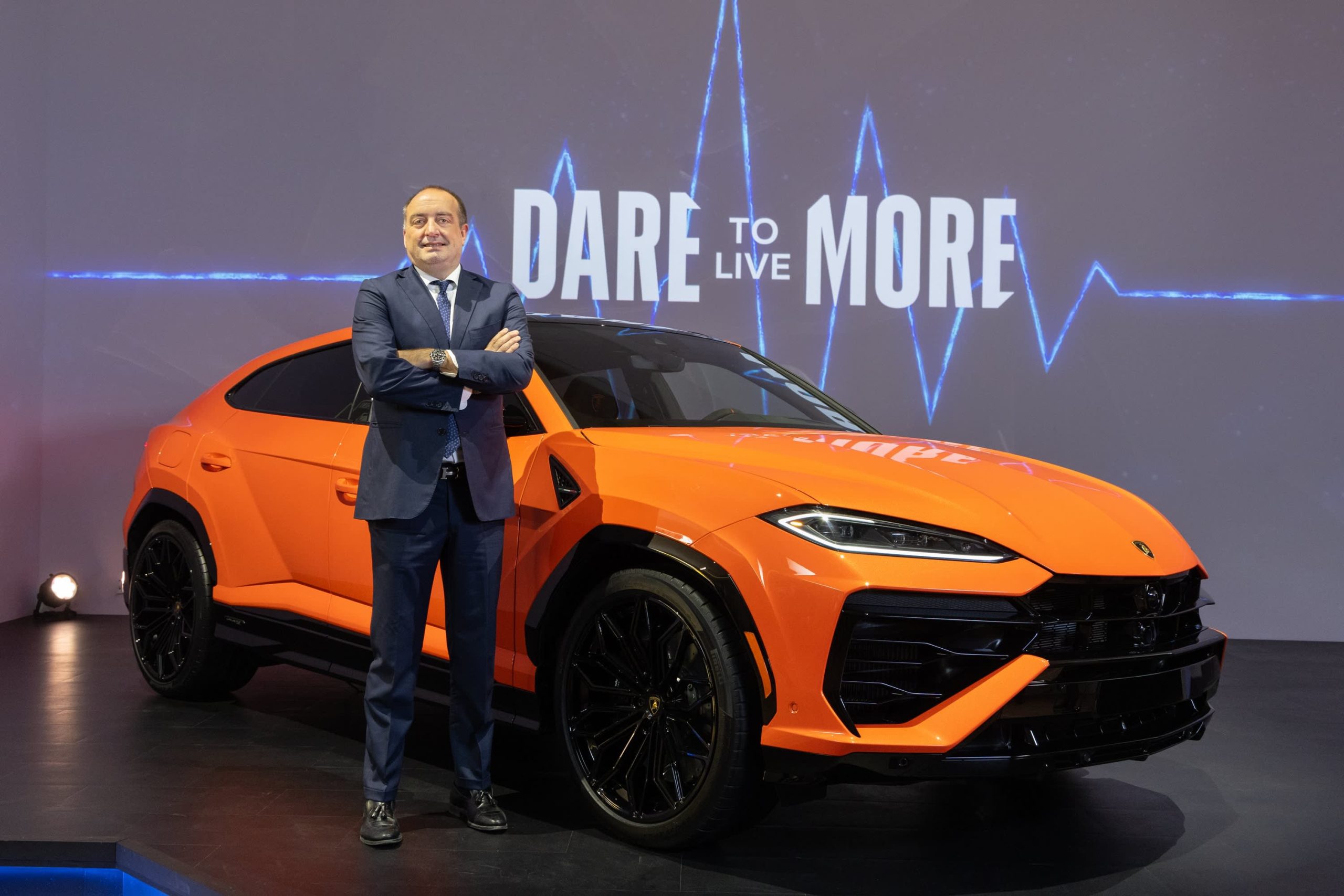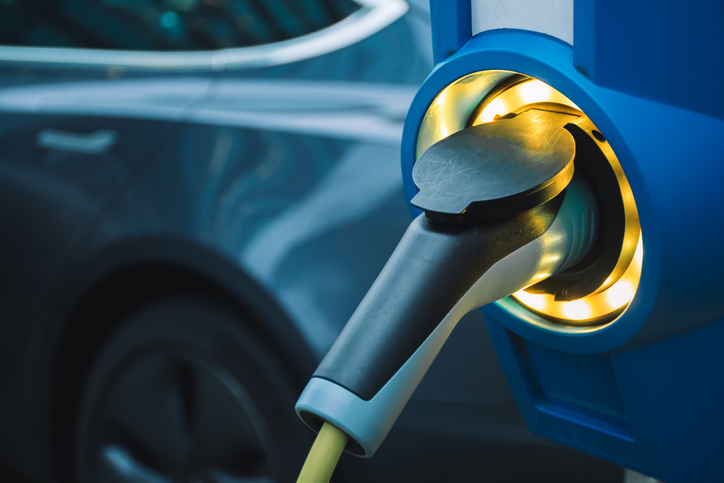Four Ways Traditional Vehicles Could Transform in the Future—Even Elevators
Researchers, professors and executives forecast changes and innovations coming for some traditional conveyances
As transportation industries look to reduce carbon emissions and keep up with changing regulations, the vehicles and vessels that carry people and products will evolve in the coming decades. Here are four trends experts in their fields see coming.
Elevators That Turn Left
Despite their name, there’s no rule that says elevators can only go up and down. Lee Gray, a professor of architectural history at the University of North Carolina at Charlotte, says elevators that also move horizontally have been part of the vertical transportation dream for more than 100 years. It hasn’t become a reality, he says, largely because of the immense costs associated with it.
But companies are moving in this direction. The German company TK Elevator, for example, has designed an elevator that moves vertically and horizontally called Multi—though it hasn’t yet been put into public operation. Dr. Gray believes multidirectional elevators will be a part of the future, deployed in a variety of ways.
If more people live in urban high-rises, multidirectional elevators could be incorporated into tall buildings and integrated with large transportation systems, such as subways, built beneath them, says Dr. Gray. They could also be used in cities like Las Vegas, where a lot of people in, say, a hotel are trying to get to a convention center across the street.
Climate change could inspire the use of multidirectional elevators to help people avoid the heat, much like cities such as Minneapolis currently have heated skyways to help people avoid the cold, Dr. Gray says. “Maybe I really don’t want to go outside,” he says. “Maybe I’ll be happy to be zooming along in my little air-conditioned elevator car.”
Truly Remote Car Charging
Charging an electric car is a lot like charging a cellphone in the 2000s: If you use it at all, you’ve got to charge it a lot. Solutions in the works include dedicated lanes that wirelessly charge cars as they drive down the road, with a pilot program launching next year in Detroit.
Dedicated lanes aren’t the best long-term solution, says Dennis Hong, a professor of mechanical and aerospace engineering and founding director of the Robotics & Mechanisms Laboratory at University of California, Los Angeles. “We want to try to avoid rigid infrastructure, things that you can’t really modify that easily,” he says.
Dr. Hong says an alternative could be car charging delivered via radio waves. The technology exists, he says, but is being used only in laboratory settings, not commercially.
Such a method would need to overcome some significant safety challenges, notes Michael Kintner-Meyer, a research engineer at the Pacific Northwest National Laboratory in Washington state. Sending that amount of energy through radio waves would be similar to pointing a radar at a car, he says, except “any living creature passing through it will be basically fried.”
Tugboat Drones
Even tugboats are being challenged to go emissions-free. These traditional helper-vessels could also go people-free, some in the industry believe.
Having crews on board comes with inefficiencies: People need bathrooms, beds, clean laundry, and they have a lot of downtime. Companies are developing technology for electric tugboats to sail without crew onboard—running autonomously when appropriate and controlled remotely by a human as needed.
Between going electric and not needing a crew, the look of a tug is going to change. Since it will no longer need a place for the crew to sleep and a high perch for the captain, the tugs of the future could be smaller and flatter. “What I envision looking at the harbor one day is you’re going to see more vessels with a very low profile,” said Jerry Silla, director of fleet engineering at Foss Maritime, a Seattle-based tug operator. “You won’t see these big superstructures, you’re not going to see vessels that are manned by crew.”
One of the biggest challenges for a crew-free tugboat? Figuring out how to transfer the tow rope from the tug to the vessel it is assisting, says Oskar Levander, senior vice president of business concepts at Norway’s Kongsberg Maritime. Today, crew members on the ship and the tug exchange a rope. But what to do when no one’s on the tug? Mr. Levander says potential solutions include big mechanical arms that come off the side of the tug, magnets, and even drone-delivered rope.
The Little, Local Airport
The U.S. has roughly 5,000 public airports, heliports, and seaplane bases, and upward of 14,000 for private use. But most travelers fly between only a few of the big ones. That is going to change, predicts Gregory Davis, CEO of Eviation, which is developing an electric plane.
Mr. Davis contends that electric planes will be cheaper to operate than those powered by jet fuel. They’re also going to be smaller. His company’s Alice prototype—which made its first flight in September—holds nine passengers and two crew members. The emergence of electric planes will eventually open up the nation’s regional and local airports to more commercial flights, he predicts, allowing travelers to avoid larger airports.
“We have a major potential to expand point-to-point air travel, which is also the most cost-effective and cleanest way of getting specifically from where you [are] to where you want to go,” he said. “You’re going to have much more choice and much easier access to air travel in 2050.”
Eviation plans to begin delivering aircraft in 2027. But before electric airplanes begin carrying commercial passengers between regional airports, there’s work to be done beyond the design of the planes, Mr. Davis says—from dealing with regulatory hurdles to building out a charging network at airports.
 Copyright 2020, Dow Jones & Company, Inc. All Rights Reserved Worldwide. LEARN MORE
Copyright 2020, Dow Jones & Company, Inc. All Rights Reserved Worldwide. LEARN MORE
This stylish family home combines a classic palette and finishes with a flexible floorplan
Just 55 minutes from Sydney, make this your creative getaway located in the majestic Hawkesbury region.
The marketplace has spoken and, at least for now, it’s showing preference for hybrids and plug-in hybrids (PHEVs) over battery electrics. That makes Toyota’s foot dragging on EVs (and full speed ahead on hybrids) look fairly wise, though the timeline along a bumpy road still gets us to full electrification by 2035.
Italian supercar producer Lamborghini, in business since 1963, is also proceeding, incrementally, toward battery power. In an interview, Federico Foschini , Lamborghini’s chief global marketing and sales officer, talked about the new Urus SE plug-in hybrid the company showed at its lounge in New York on Monday.

Lamborghini
The Urus SE SUV will sell for US$258,000 in the U.S. (the company’s biggest market) when it goes on sale internationally in the first quarter of 2025, Foschini says.
“We’re using the contribution from the electric motor and battery to not only lower emissions but also to boost performance,” he says. “Next year, all three of our models [the others are the Revuelto, a PHEV from launch, and the continuation of the Huracán] will be available as PHEVs.”
The Euro-spec Urus SE will have a stated 37 miles of electric-only range, thanks to a 192-horsepower electric motor and a 25.9-kilowatt-hour battery, but that distance will probably be less in stricter U.S. federal testing. In electric mode, the SE can reach 81 miles per hour. With the 4-litre 620-horsepower twin-turbo V8 engine engaged, the picture is quite different. With 789 horsepower and 701 pound-feet of torque on tap, the SE—as big as it is—can reach 62 mph in 3.4 seconds and attain 193 mph. It’s marginally faster than the Urus S, but also slightly under the cutting-edge Urus Performante model. Lamborghini says the SE reduces emissions by 80% compared to a standard Urus.
Lamborghini’s Urus plans are a little complicated. The company’s order books are full through 2025, but after that it plans to ditch the S and Performante models and produce only the SE. That’s only for a year, however, because the all-electric Urus should arrive by 2029.

Lamborghini
Thanks to the electric motor, the Urus SE offers all-wheel drive. The motor is situated inside the eight-speed automatic transmission, and it acts as a booster for the V8 but it can also drive the wheels on its own. The electric torque-vectoring system distributes power to the wheels that need it for improved cornering. The Urus SE has six driving modes, with variations that give a total of 11 performance options. There are carbon ceramic brakes front and rear.
To distinguish it, the Urus SE gets a new “floating” hood design and a new grille, headlights with matrix LED technology and a new lighting signature, and a redesigned bumper. There are more than 100 bodywork styling options, and 47 interior color combinations, with four embroidery types. The rear liftgate has also been restyled, with lights that connect the tail light clusters. The rear diffuser was redesigned to give 35% more downforce (compared to the Urus S) and keep the car on the road.
The Urus represents about 60% of U.S. Lamborghini sales, Foschini says, and in the early years 80% of buyers were new to the brand. Now it’s down to 70%because, as Foschini says, some happy Urus owners have upgraded to the Performante model. Lamborghini sold 3,000 cars last year in the U.S., where it has 44 dealers. Global sales were 10,112, the first time the marque went into five figures.
The average Urus buyer is 45 years old, though it’s 10 years younger in China and 10 years older in Japan. Only 10% are women, though that percentage is increasing.
“The customer base is widening, thanks to the broad appeal of the Urus—it’s a very usable car,” Foschini says. “The new buyers are successful in business, appreciate the technology, the performance, the unconventional design, and the fun-to-drive nature of the Urus.”
Maserati has two SUVs in its lineup, the Levante and the smaller Grecale. But Foschini says Lamborghini has no such plans. “A smaller SUV is not consistent with the positioning of our brand,” he says. “It’s not what we need in our portfolio now.”
It’s unclear exactly when Lamborghini will become an all-battery-electric brand. Foschini says that the Italian automaker is working with Volkswagen Group partner Porsche on e-fuel, synthetic and renewably made gasoline that could presumably extend the brand’s internal-combustion identity. But now, e-fuel is very expensive to make as it relies on wind power and captured carbon dioxide.
During Monterey Car Week in 2023, Lamborghini showed the Lanzador , a 2+2 electric concept car with high ground clearance that is headed for production. “This is the right electric vehicle for us,” Foschini says. “And the production version will look better than the concept.” The Lanzador, Lamborghini’s fourth model, should arrive in 2028.
This stylish family home combines a classic palette and finishes with a flexible floorplan
Consumers are going to gravitate toward applications powered by the buzzy new technology, analyst Michael Wolf predicts






















